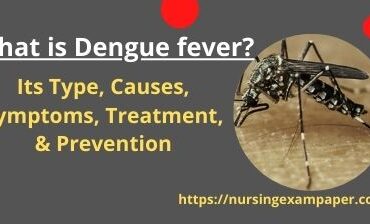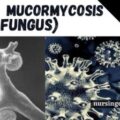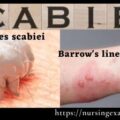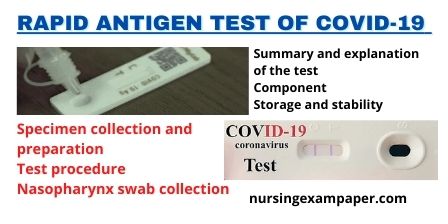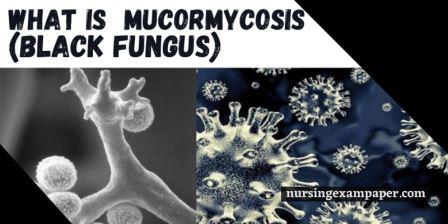What are dengue fever and its symptoms? Dengue fever is a common communicable disease. The main characteristics of which are as follows: It is characterized by high fever, extreme body pain, and headache. It occurs in abundance and is seen as an epidemic from time to time. Apart from this, it is a seasonal disease. In 1996, there was an epidemic in Delhi and some parts of North India, the intensity of this disease is higher in children than in adults.
This disease occurs all over the world except the continent of Europe and affects a large number of people, for example, it is estimated that about 20 million people worldwide get dengue fever every year.
For what reason does this happen? It is caused by the dengue virus. It has four different types. Type 1, 2, 3, and 4. In common language, this disease is called ‘Break Bone Fever’ because it causes a lot of pain in the body and joints.
How does dengue spread?
Like malaria, dengue fever is also spread by mosquito bites. These mosquitoes are called ‘Aedes mosquitoes’ which are very bold and courageous mosquitoes, and also bite during the day. In India, this disease is most prevalent during the rainy season and the months immediately following it (ie July to October).
Dengue virus is present in large quantities in the blood of a patient suffering from dengue fever. When the Aedes mosquito bites a dengue patient, it sucks the blood of that patient, along with the blood, the dengue virus also enters the body of the mosquito. Dengue virus develops in the mosquito’s body for a few more days. When a mosquito carrying the dengue virus bites another healthy person, it transmits the dengue virus to that person’s body, thus that person becomes infected with the dengue virus and after a few days, symptoms of dengue fever disease can appear in him.
Transition period – The day a mosquito infected with the dengue virus bites a person, after about 3 to 5 days, the symptoms of dengue fever can appear in such a person, this infection period can also be from 3 to 10 days.
Symptoms of Dengue fever/ dengue (ke lakshan) –
The Cell Structure, Functions, Parts, and Characteristics
Symptoms will depend on the type of dengue fever Dengue fever is of three types-
- Classical (Simple) Dengue Fever
- Dengue Hemorrhagic Fever
- Dengue Shock Syndrome
Classical (simple) dengue fever is a curable disease and does not cause death, but dengue hemorrhagic fever (DHF) and dengue shock syndrome (DSS) can be fatal if treatment is not started promptly.
It is therefore very important to recognize whether there is simple dengue fever or DHF and DSS. The following symptoms will go a long way in identifying these types: –
1. Classical (Simple) Dengue Fever
UP NHM CHO Question Paper Answer Key
- Sudden high fever with chills.
- Headache Pain in muscles and joints.
- Pain in the back of the eyes, which gets worse by pressing or moving the eyes.
- Extreme weakness, extreme loss of appetite, and nausea.
- Bad taste in the mouth.
- Slight pain in the throat.
- The patient feels very sad and ill.
- Red rash on the body Reddish pink rash can come out on the body. A diffuse rash-like rash may occur on the face, neck, and chest, later this rash becomes more pronounced.
The duration of simple dengue fever lasts for about 5 to 7 days and the patient recovers. In most of the cases, the patients have only simple dengue fever.
2. Dengue Hemorrhagic Fever
Post Basic B.sc Nursing Entrance Exam Question Papers pdf
DHL should be suspected if any of the following symptoms appear along with the symptoms of simple dengue fever.
Symptoms of Bleeding /Hemorrhagic – Bleeding or vomiting from the nose, gums, small or large patches of dark blue-black color on the skin, etc. There are signs of bleeding if a ‘tourniquet test’ is done by the patient’s health worker. If found positive, the diagnosis of DHF can be confirmed based on certain blood tests in the laboratory.
3. Dengue Shock Syndrome –
In this type of dengue fever, along with the above symptoms of DHF, some symptoms of shock are also seen. Symptoms of shock in dengue fever are as follows
- The patient becomes very restless and his skin feels cold in spite of high fever.
- The patient gradually loses consciousness.
- If the patient’s pulse is observed, it feels fast and weak. The patient’s blood pressure starts decreasing.
Dengue Fever Treatment
If the patient has simple dengue fever, then it can be treated and taken care of at home. Since it is a self-curing disease, only symptomatic treatment is needed. For example:
- Keep the fever down by taking a paracetamol tablet or syrup as per the advice of the health worker.
- Never give disprin/asprin to the patient.
- If the fever is more than 102 degrees Fahrenheit, then do hydrotherapy to reduce the fever.
- Continue to feed normally. In case of fever, the body needs more food.
- let the patient rest.
If the patient shows any symptoms of DHF or DSS, take the patient to the nearest hospital as soon as possible. So that proper diagnosis of the disease can be done by conducting necessary tests there and treatment can be started. (Such as the transfusion of fluids or platelets cells) Platelets are a type of blood cell that is reduced in DHF or DSS. It is also worth remembering that not every patient with dengue fever needs to have platelets transfused.
Prevention of dengue fever
Prevention of dengue fever is simple, cheap, and better, some common measures to be taken are as follows
- stop the breeding of Aedes mosquitoes
- Preventing Aedes Mosquito Bites
Mucormycosis / Black Fungus Symptom & Prevention
Measures to stop the breeding of Aedes mosquitoes
1. Mosquitoes breed only in water sources such as drains, pits, room coolers, broken bottles, old tires, and other similar objects where water stagnates.
- Don’t let water collect in and around your houses, fill the pits with soil, clean the clogged drains, empty all the water of both the room coolers and the flowers completely once a week Teach us and refill eaten Proper immersion of broken tires, cans, and bottles, etc. Keep cleanliness around the house.
- Keep water tanks and utensils well covered so that mosquitoes cannot enter and breed in them
- If it is not possible to completely empty the room cooler and water tanks, it is advisable to pour petrol or kerosene once a week. For every 100 liters of water, 30 ml of petrol or kerosene is sufficient, doing so will stop the breeding of mosquitoes.
- You can also add some smaller types of fish (eg gambusia, lobster) to the water sources. These fish feed on water-borne mosquitoes and their eggs and larvae. These fish can be obtained from local administrative offices (eg BDO office)
- If possible, prevent mosquitoes from entering the house by placing fine mesh on the windows and doors.
- Use mosquito repellent creams, sprays, mats, coils, etc. to repel and kill mosquitoes. Neem smoke is a good home remedy to get rid of mosquitoes. Mosquito bites can also be avoided by using mosquito nets at night. Cinetrolla oil is also very effective in repelling mosquitoes.
- Wearing clothes that cover as much of the body as possible. This precaution is very important for children. During the malaria season (July to October) it is better for children to avoid wearing shorts and t-shirts.
- Whenever the staff who spray mosquito repellent come to do this work, do not refuse them. It is in your own interest to issue the medicine at home.
- Spray anti-mosquito once a week in all areas inside the house, this medicine should be sprayed behind photo frames, curtains, calendars, etc. And in storerooms and all corners of the house. When spraying the medicine, cover your mouth and nose with a cloth and keep all food and drink covered.
- Empty the water storage tray at the bottom of the fridge every day.
- Keep the area around your house clean, do not throw garbage here and there. Do not allow weeds and shrubs to grow near the house. (Not exactly half the diameter of at least 100 meters around the house) These serve as hiding and resting places for mosquitoes.
- If you find that there has been an increase in the number of mosquitoes in your area or that many people are suffering from fever, inform your local health center, municipality, or panchayat center.
- It is also worth remembering that Aedes mosquitoes can bite during the day too, so take necessary precautions during the day to avoid their bites.
- If for some reason it is not possible to set traps on doors and windows, spray pyrethrum solution daily throughout the house.
- Dengue fever most commonly occurs between July and October, as this season has favourable conditions for the breeding of mosquitoes, so all precautions should be taken during this season.
- Finally, one more piece of advice. Keep a patient suffering from dengue fever on a bed covered with a mosquito net during the first 6-7 days of illness so that mosquitoes cannot reach it. This measure will prove to be very helpful in saving other people of the society from dengue fever.
If you ever find that many people are suffering from a fever that could be dengue, notify the local health authorities as soon as possible. By doing this, dengue fever can be controlled by taking the necessary steps before it becomes an epidemic.
Also, Read
Endocrine Quiz For Upcoming Nursing Exams
